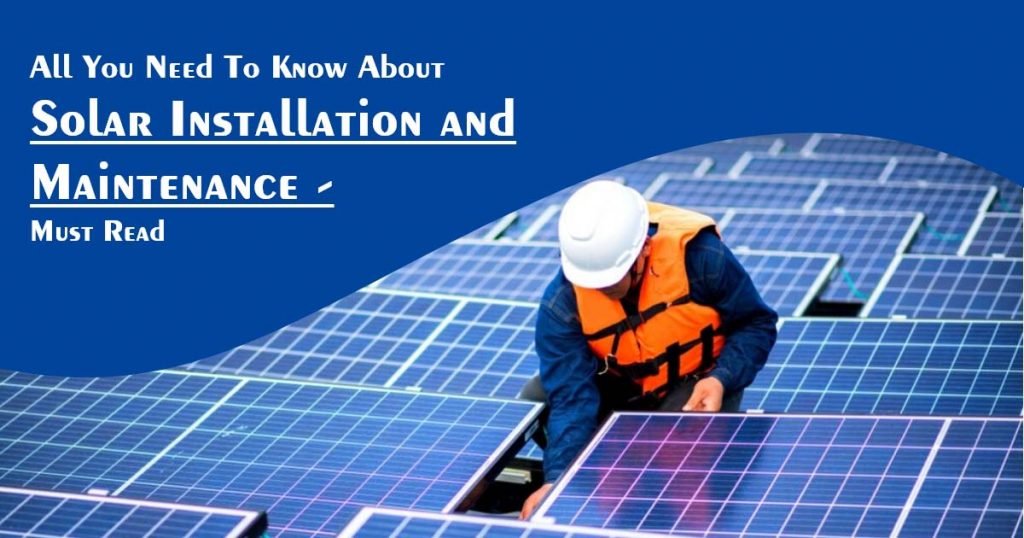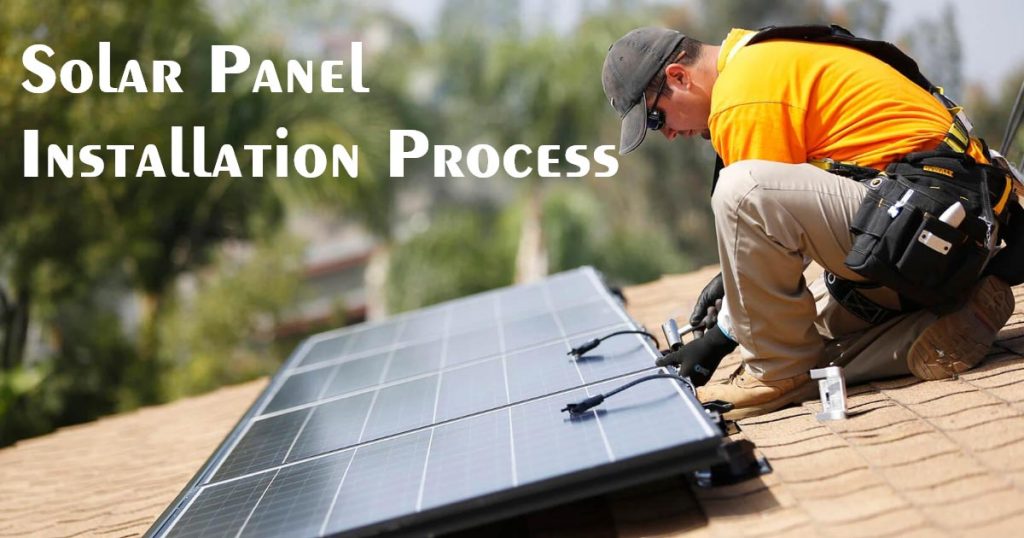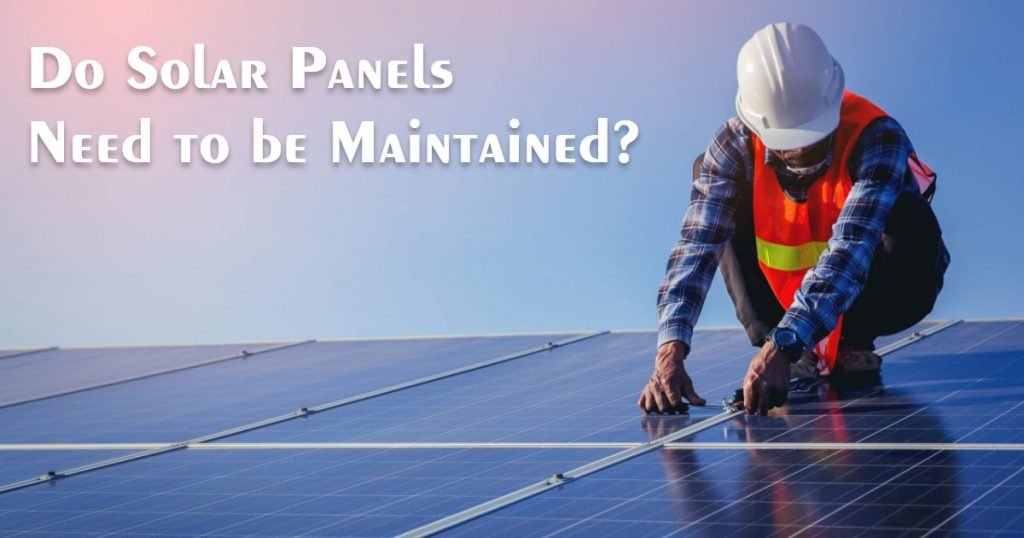All You Need To Know About Solar Installation and Maintenance – Must Read!

More and more people in the United States are beginning to invest in solar power systems. They’re installing solar panels on their rooftops, and why not? Solar power technology has advanced dramatically in recent years, with many of these improvements helping to reduce the cost of the equipment needed. Installing solar panels on your roof is another great method to create electricity for your home, company, and the grid while reducing your environmental impact.
Here’s all you must and you need to know about Solar Installation and Maintenance –
Solar Panel Installation Process

The roof is the most popular site for solar PV panels to be installed. The ideal installation parameters are usually present on most rooftops, ensuring that panels receive the maximum amount of sunlight.
Also Read – Do You Need A Solar Maintenance Package? You Should Know!
Solar panels can also be put on the ground if roof installation is not possible or desired. All you have to do now is make sure that nothing is blocking your view of the sun.
The steps for installing solar panels on a roof are as follows:
- Set Up Scaffolding – To begin, you must create scaffolding to ensure your safety while on the roof throughout the installation process.
- Install Solar Panel Mounts – The solar panel mounting system must then be installed. The solar panels’ foundation will be supported by this. To get the most solar exposure, the entire mounting structure must be inclined at an angle of 18 to 36 degrees.
- Install the Solar Panels – The solar panel must be put on the mounting framework once the mounts are in place. To keep it stable, make sure all of the bolts and nuts are tightened.
- Wire the Solar Panels – The electrical wiring is the next step in the installation procedure. MC4 connections are commonly used since they are compatible with all types of solar panels. During the wiring installation, make sure to turn off the power to the house.
- Install Solar Inverter – After that, the system must be connected to the solar inverter. It’s usually mounted near the main panel and can be found both indoors and out. When inverters are kept in a colder environment, they perform better. If the inverter is outside, it should be protected from the sun in the afternoon. If it’s located indoors, the garage or utility room are usually the best options because they’re cold and have airflow for the majority of the year.
- Bond Solar Inverter and Solar Battery – Following that, the solar inverter must be linked to the solar battery. Solar battery storage can help you avoid worrying about a lack of usable energy during overcast days, as well as reduce the cost of installing a solar battery storage system.
- Connect the consumer unit to the inverter – To generate electricity, the inverter must be linked to the consumer unit. A generation meter should also be installed to track the amount of electricity generated by the solar panels. You can examine the functioning of your solar system using your computer or another device. You can, for example, look at how much electricity you create at different times and determine when the best time is to use your washing machine or other utilities.
- Start and Test Solar Panels – The next step is to turn on the power and test the solar panel system that has just been installed. The solar panel installation procedure is then done.
Also Read – How Much Rooftop Area is Required to Install Solar Panels?
Do Solar Panels Need to be Maintained?

Solar panels are relatively low-maintenance and require little attention. The only thing they require is a simple cleaning on a regular basis to ensure that dirt, leaves, and other debris do not hinder the sun’s beams. Only during seasons of heavy snowfall or if your panels’ energy output begins to decline will you require more thorough maintenance. Let’s look at how to ensure that your solar panels last as long as possible. Get the best maintenance service from the Solar company near me.
How do you Solar Installation and Maintenance?
If your panels are slanted, you’re in luck: rain washes away the trash that has gathered on them. During the dry season or extended periods without rain, however, it is necessary to manually clean them. Cleaning your solar panels between two and four times a year is generally suggested. The good news is that it won’t take much effort. Your panels will be clean and in good shape with just a leaf blower or a brief spray with a garden hose.
After a large snowfall in the winter, you may need to clean your panels; you can have top-class Solar Cleaning Services in Fresno. If you’re clearing snow with water, make sure it’s lukewarm. You can also use a long-handled squeegee. When cleaning snow off the panels, remember to never use hot water. The panels are composed of tempered glass, and the severe temperature difference between hot and cold water might cause them to break.
Solar panels require almost minimum upkeep after they are installed. All you have to do now is make sure they’re clean and not obstructed by anything. Because rain helps eliminate dirt, a tilted roof will require less cleaning. Solar panels, on the other hand, have a very long lifespan. Solar in Fresno comes with a usual warranty of 25 years, but they can endure up to 40 years.
What about warranties?
Warranties are an important part of ensuring that your solar panels and other connected equipment are protected. A warranty allows you to hold the manufacturer accountable if something goes wrong with your solar panels at no additional cost to you. Some incentive programs (available in a variety of jurisdictions) additionally require that your solar equipment be covered by a warranty.
Also Read – Finding the Right Warranty for Your Home Solar System Installation.
Types of warranties –
For solar panels, equipment, maintenance, and installation, a variety of warranties are available. The following are examples of warranties:
- Solar Panel Warranty
Your solar panels should be covered for 25–30 years with this type of guarantee. Understand that if you are provided a guarantee that is less than 25 years, you are getting a warranty that is less than the industry standard; get the best Solar Panel Installer in California. Over the panel’s warranty life, this warranty ensures a guaranteed minimum power output. According to industry standards, you should get at least 80% energy output for the duration of the guarantee period.
- Installation Warranty
This warranty covers poorly installed solar panels and related equipment. These warranties might run anywhere from two to ten years. Many of these warranties cover labor and parts for repairing or replacing system elements, roof penetrations, shipping, and replacing defective parts, among other things. For more details, make sure to inquire about the installation guarantees offered by your contractor.
- Inverter Warranty
This warranty varies from one firm to the next. However, there are a few industry guidelines that can assist you in determining the warranties that you should be granted. The warranty time for standard “string inverters,” which manage power from a “string” of panels, is usually between 5 and 10 years. The warranties on generic “micro-inverters,” which attach to individual panels, range from 20 to 25 years.
Conclusion-
This is all you need to know about Solar Installation and Maintenance, if you are planning to go solar, this is your best chance and the best time to add solar in your home.